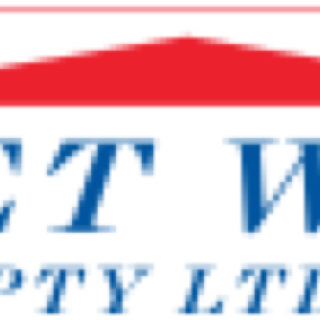Title Page
-
Contract
-
Contract Number
-
Site conducted
-
Conducted on
-
Prepared by
-
Site Manager
-
Work being carried out at time of inspection
ENVIRONMENTAL INSPECTION REPORT
1. Waste Management
-
1.1 Is there a waste management plan for the site? If so, is it being utilised and understood by site staff?
-
Give details:
-
1.2 Check what wastes have been identified for Recycling and of staff awareness?
-
Give details:
-
1.3 Ensure skips are adequately labeled and that the correct waste is being placed in them.
-
Give details:
-
1.4 Check skip contents. Check provision has been put in place for segregation of waste (e.g. metal, wood, insulation, and alloy).
-
Give details:
-
1.5 Are closed skips being used? If not, are open skips being covered with tarpaulins?
-
Give details:
-
1.6 Have Duty of Care checks been carried out on waste carriers and waste disposal sites?
-
Give details:
-
1.7 Check copies of waste transfer/hazardous waste consignment notes.
-
Give details:
-
1.8 Has any waste management training taken place? Only trained and competent staff should be signing waste documentation.
-
Give details:
-
1.9 Is hazardous waste clearly identified and segregated from ordinary waste?
-
Give details:
-
Findings:
2 Water and effluent discharges
-
2.1 Is there a discharge consent for the site? Is it understood?
-
Give details:
-
2.2 Is there a requirement for a consent on site, if so has an application been submitted?
-
Give details:
-
2.3 Are works free from interference with current consent?
-
Does a new consent need to be created?
-
Please ensure that a new consent is written before continuing with any work involving water and effluent discharges
-
2.4 Is there written proof of any temporary consents?
-
Give details:
-
2.5 Are there any temporary sampling requirements?
-
Give details:
-
2.6 Depending on the work taking place on site, check discharge points (Daily, weekly).
-
Give details:
-
2.7 Are filtration methods in place for extracted water?
-
Give details:
-
2.8 Are watercourses being monitored for evidence of pollution?
-
Give details:
-
2.9 Check temporary equipment settlement tanks, interceptors etc (daily weekly monthly).
-
Give details:
-
2.10 Is there a site drainage plan?
-
Give details:
-
2.11 Check installed interceptors as required depending on work taking place.
-
Give details:
-
2.12 Is there a site emergency plan for spills etc? If so is it understood has it been tested? Has staff been trained in dealing with spills?
-
Give details:
-
2.13 Do site personnel know where penstock valves / closure devises are located?
-
Give details:
-
Findings:
3 Ecology / biodiversity
-
3.1 Are Phase 1 habitat and hedgerow surveys in place?
-
Give details:
-
3.2 Are Phase 2 National Vegetation Classification (NVC) surveys in place?
-
Give details:
-
3.3 Are river corridor surveys in place?
-
Give details:
-
3.4 Are reptile and amphibian surveys (including great crested newts) in place?
-
Give details:
-
3.5 Are breeding and wintering bird surveys in place?
-
Give details:
-
3.6 Are mammal surveys, including bats, otters, dormice, water voles and badgers in place?
-
Give details:
-
3.7 Are biological water quality surveys and aquatic invertebrate surveys in place?
-
Give details:
-
NB: If any of the above have been carried out, what measures have been put in place to ensure no harm occurs? Have site staff been briefed on the survey?
-
3.8 Do site staff know what protected species look like? Are procedures in place for protected species?
-
Give details:
-
3.9 Vegetation clearance
-
Give details:
-
3.10 Soil removal
-
Give details:
-
3.11 Temporary vehicle access
-
Give details:
-
3.12 Changes to air quality
-
Give details:
-
3.13 Changes in human activity
-
Give details:
-
3.14 Fragmentation of habitats
-
Give details:
-
3.15 Hydrological changes
-
Give details:
-
3.16 Environmental incidents
-
Give details:
-
3.17 Is a procedure in place for managing unexpected archaeological finds?
-
Give details:
-
Findings:
4 Transport, Plant and Equipment
-
4.1 All site vehicles should be maintained to a standard of roadworthiness expected of a vehicle to be used on the public highway.
-
Give details:
-
4.2 Check vehicle maintenance records, daily / weekly inspections and any service records held for vehicles
-
Give details:
-
4.3 Check vehicle exhaust emissions (no black / sooty / noisy exhaust)
-
Give details:
-
4.4 Check around vehicles for oil leaks
-
Give details:
-
4.5 Is fuel storage / handling area clean, tidy and well controlled?
-
Give details:
-
4.6 Are measures in place for preventing mud being transferred to public roads?
-
Give details:
-
4.7 Does all stationary plant have a drip tray available?
-
Give details:
-
4.8 Check that there is a clearly defined wash-down area for delivery vehicles.
-
Give details:
-
4.9 All plant and equipment on site must be maintained (check maintenance records).
-
Give details:
-
Findings:
5 COSHH
-
5.1 Is there a defined site process for managing COSHH?
-
Give details:
-
5.2 Check what hazardous materials are on site.
-
Give details:
-
5.3 Is there a MSDS for all materials?
-
Give details:
-
5.4 Are there COSHH risk assessments on site?
-
Give details:
-
5.5 Is there adequate storage?
-
Give details:
-
5.6 Are the storage management arrangements defined/adequate?
-
Give details:
-
5.7 Are site personnel aware of what is expected?
-
Give details:
-
5.8 Do site personnel understand what is on the COSHH risk assessment?
-
Give details:
-
Findings:
6 Emissions to air
-
6.1 Is gas controlled by record / log etc?
-
Give details:
-
Findings:
7 Nuisance
-
Noise and vibration
-
7.1 Noisy activities should be avoided or minimised. Have noise surveys taken place and results acted upon?
-
Give details:
-
7.2 Check no burning of any sort should take place on site.
-
Give details:
-
7.3 Check site emissions from diesel generators and other plant is not dark in colour.
-
Give details:
-
Dust
-
7.4 Are dust suppression techniques in use?
-
Give details:
-
7.5 Are loaded wagons leaving site covered?
-
Give details:
-
7.6 Wheel washing should be used where necessary (is equipment maintained)
-
Give details:
-
Paint – Grit Blasting
-
7.7 All paints and their fumes should be controlled. Check prevailing wind directions etc
-
Give details:
-
7.8 Paint containers or any VOCs should be stored with lids on.
-
Give details:
-
Light Pollution
-
7.9 Is any temporary lighting correctly positioned?
-
Give details:
-
7.10 Have there been any complaints, how have they been dealt with?
-
Give details:
Traffic
-
7.11 Movements should be kept to a minimum.
-
Give details:
-
7.12 Check whether movements taking place outside any planning agreements.
-
Give details:
-
7.13 Check existence of wheel cleaning arrangements.
-
Give details:
-
Findings:
8 Energy Efficiency
-
8.1 Have measures for improving energy use of site been identified and implemented?
-
Give details:
-
Findings:















